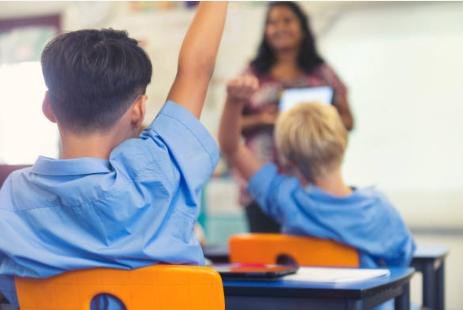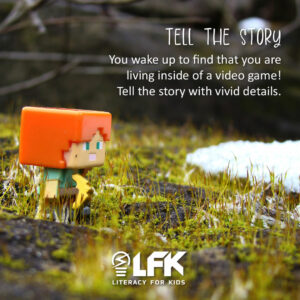How to Get and Keep Your Learners Engaged in 12 Ways

As we enter the latter part of the year, it can be challenging to keep your learners engaged. Unfortunately, there’s no magic list for captivating students in a lesson, but I’ve compiled 12 Active Learning Strategies that I hope you’ll find helpful.
Before we start………..engagement is not always easily visible. Also, we know that not all learning activities will be high-octane “fun”. Engagement means students see the value of the learning and are mentally engaged with the information, actively thinking, and forming meaningful associations. Their thinking is extended and challenged.
Over many years, I’ve tried and tested a number of reliable and engaging strategies to use with middle primary and high school students. Let’s take a look.
1. Model Engagement
Getting kids reading is perhaps the biggest challenge ~ for both parents and teachers. Wanting to engage students in independent reading? Show them how you are enjoying a book. Share your thoughts. Read some of it to them. Read when they can see you doing it.
Trying to engage reluctant writers? Model your struggles and frustrations. Show them how to write a bad hook just to get something down on paper and then revise it. Smile the whole time! Ask thoughtful questions. For example, “I’m not loving this rough draft of a hook, but I’m so glad that I at least have something down on paper. I’d love your help! Who would like to help me make this better? Suggestions?
2. Incorporating Music
Think about a great memory or the last time you felt truly inspired. Was music a part of the experience? Music has a way of bringing dull moments to life and can be a valuable teaching resource. Not sure how? Here are some examples:
a) Teaching point ~ Write a question on the board that relates the song to the literacy skill that the students are currently learning. Songs make for adding engagement to texts. Try “Fly” by Nicki Minaj for parallelism in grammar or “Jolene” by Dolly Parton for repetition, figurative language, or characterization.
b) As a timer ~ Timers in the classroom can be great: when students only have a few minutes to respond to a task, when you’re transitioning between tasks, or when it’s clean-up time. Use music! Ask your students for their favourite *clean* song and create a playlist os songs that you can quickly pull up and move through.
c) To teach Figurative Language ~ this is one of the core Comprehension strategies in our online programs and music can connect kids with examples. Show students the difference between figurative and literal, and help them see how a text’s impact would be lessened without it (and we want them to transfer this into their writing!). “Stereo Hearts” by Gym Class Heroes is excellent for metaphors, “Love Song” by Taylor Swift for allusion, and “Grenade” by Bruno Mars for hyperbole.
3. Ownership of their Learning
Students are more engaged in learning when lessons are relevant to the real world. Connect literature to essential questions that help students understand life. Choose books in which they can see themselves or their culture present. Try passion projects or genius hours. Teach real-world writing skills like email conventions and journalling. Plus, of course, bring in elements of pop culture whenever appropriate ~ kids love short films, music, commercials, and more to teach literacy analysis.
5. Using Visual Elements
Visuals can captivate students. Graphic organizers provide them with naturally differentiated entry points for discussion. Plus, the design of many graphic organizers (see the above link for our Hamburger one!) elevates thinking more than a traditional worksheet. Don’t forget Word Walls – all students benefit from these.
6. Movement
I’ve found that any time that we can incorporate movement in our classrooms, engagement tends to increase. Whether we are having students participate in a gallery walk, manipulating task cards or sorting information to categorize it, when students are standing and moving around, they are more likely to be engaged. I really value learning stations as a great way to incorporate movement because students get to practice many skills related to the learning objectives…all from different learning perspectives.
7. Use Colour and Art
I greatly admire those artistic teachers who can freehand draw and create amazing displays! Know that colour brightens moods, lessons and learning. And not only on the walls – get your students to colour-code on paper, for example, details in a paragraph when writing. I ask my students to highlight their sentence starters – are they varied?
Use art in your literacy displays to pique students’ interest. For example, I love encouraging students to think critically by using coloured sticky notes to draw vocabulary connections. Ask them to analyze and evaluate graphic design elements by looking at illustrators in picture books or using art to capture reflections about a text. Utilise photographs or project images related to a text before reading.
We recently developed these image-rich 51 Writing Prompts for our teachers and they’ve been a huge hit with their learners to stimulate writing:


8. Stop and Jot
Sometimes we are so busy trying to impart information that we don’t stop and pause and allow learning to sink in for our students. Thinking is essential for engagement. Remember to include brain dumps, stop and jots (a simple word doc with appealing images works well) as a way for students to write down what they remember as you move from one topic to another or between parts of the lesson. This type of activity is also helpful in removing “dead time” in the classroom, which decreases engagement.
9. Consider a podcast
I really enjoy a good podcast and they require a different type of listening. Students can build their listening comprehension while learning auditorily from an informational text. Podcasts are especially engaging when the topic is intriguing or relevant to students. Here is a list of 19 podcasts for the classroom from Common Sense media.
10. Retention
In order to engage students in learning, they need to experience the excitement of retaining new information. When learning is tangible, or measurable, students tend to be more motivated.
Vocabulary is my jam. Whether you are passionate about teaching it or not, I have so many fun vocabulary activities to share with you. If you love vocabulary, these will complement any word list. If you don’t enjoy teaching vocabulary, you may just find these put a skip in your step. Improved vocab leads to improved writing so it’s a win-win.
The trick with teaching vocabulary is figuring out how to make it effective so that students are both ENGAGED and RETAINING their new words. Pop onto our website Literacy for Kids
and sign up for my email list through the form to access a free library of resources, exclusive for teachers and subscribers.
11. Collaborative Learning
We sometimes skip over collaboration when we need to cover content. And it does take time! However, the social nature of learning is so important for our students. To promote engagement, regularly ask students to work together to share ideas about what they are reading, to revise their writing/planning, to respond to one another in verbal discussions, and to join in research projects.
12. Challenge your students
Boredom is a classroom killer. Students appreciate the type of challenge that makes them think but doesn’t frustrate them. Ask questions that challenge students’ thinking in developmentally appropriate ways. Encourage them to participate in some metacognition, but always avoid busy work.
True student engagement is not the same as participation. With participation, students may be doing what we ask them to. They may be raising their hands at the appropriate times, but that doesn’t mean they are mentally and emotionally engaging or connecting with the lesson.
We need to intentionally build active learning into our classrooms. Engagement increases students’ attention, sharpens their focus, motivates them to think at a higher level, and promotes meaningful learning.
Looking for a program to engage and further improve your learners’ literacy levels?
Literacy for Boys and Literacy for Kids have been adopted in over 50 schools around Australia, NZ, and the Asia Pacific. Contact us for a FREE trial in your school. See for yourself how our engaging programs are boosting literacy levels in the next generation!
Check out our blogs for more ideas and tips.
Super skills of Reading: How to help your child become a better reader
Steps to Successfully Support Disengaged Learners
See us featured in The Educator Australia magazine
Research confirms that early reading boosts literacy
Boys Love LFB – Here’s what they have to say!
Get boys reading in the digital age
Why write? Tips for reluctant writers
Brought to you by Tanya Grambower

